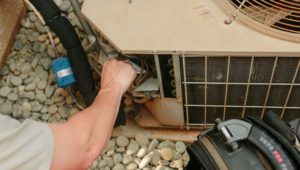Are you dissatisfied with the level of comfort provided by the HVAC system in your Sacramento home or business premises? Let’s review some helpful information to determine if HVAC zoning will fix your problem.
What Is HVAC Zoning?
HVAC zoning refers to the creation of different sections/zones within a building so that the settings of the HVAC system can be customized for each of those zones. For example, you can divide your home into three zones. You can use different heating or cooling settings in different zones even if one HVAC system serves the entire building.
Think about zoning as the installation of different light switches for each room in the home. You don’t have to switch on the lights in the entire house because you want to read late at night. Similarly, you don’t have to lower the temperature of the entire house just because your bedroom is too hot for your liking.
What Are the Required Zoning Components?
The zone control panel.
This is the “brain” of the entire zoned HVAC system. This control panel receives the requests made by the different thermostats and triggers the execution of those requests.
For example, the thermostat in the kitchen may call for extra cooling while someone is cooking. The zone control panel receives that request and widens the damper to the kitchen so more conditioned air is directed to the area. The zone control panel is like a choir director who ensures that everything is working seamlessly.
Thermostats.
You will need as many thermostats as there are zones in the building. The thermostat in a given space allows the occupants of that space to select their desired temperature settings.
Zone Dampers.
Think of zone dampers as “valves” which regulate the flow of conditioned air and heating into a zone/room. The damper executes the instructions sent by the zone control panel after getting information from the thermostat in a given zone/room. For example, the damper will close and reduce the flow of conditioned air if the room/zone has reached the desired temperature.
The dampers can be placed inside the ducts (in-line dampers) or they can be placed on the air registers. In-line dampers are usually preferred in case a new HVAC system is being installed. The dampers are usually placed on the air registers during retrofit applications in which access to the ductwork is difficult or expensive.
Bypass damper.
A bypass damper is a special kind of damper that releases excess pressure in the HVAC system. This happens when most zones have signaled (through the thermostat) that no heating or cooling is currently needed. The conditioned air of the HVAC system would overstrain the remaining zones which still require heating or cooling. The bypass damper deals with that excess pressure/conditioned air by channeling it to the return air register or directing it to a common section of the building, such as a hallway.
Is HVAC Zoning Recommended for All Sacramento Buildings?
HVAC zone control isn’t a requirement for all buildings even if every building can attain benefits from this upgrade. The situations below represent examples of those who would reap the greatest benefits from HVAC zoning.
Buildings with extensions.
HVAC zoning can be helpful if an extension, such as an additional bedroom or finished basement, was added and has unique heating, cooling, and air conditioning requirements. For example, a room added above the garage may be hotter than other bedrooms in a home. Zoning addresses the unique needs of such an extra room.
Multiple levels.
Buildings with multiple levels need HVAC zoning since each of those levels is unlikely to have the same HVAC needs. For instance, the ground floor may be cooler than the upper floor during the summer.
Different occupancy levels.
Buildings with sections that are rarely used can benefit from HVAC zoning. This is because the areas which aren’t used a lot can have their air conditioning turned off. Rooms with lots of occupants can also have their HVAC settings adjusted. This will address the needs of that larger number of people who may feel hotter than those who are in a room with fewer occupants.
Single-level homes may not require zoning unless a Sacramento HVAC professional inspects the building and recommends that zoning is necessary.
How Is HVAC Zoning Done?
The way in which HVAC zoning is done in Sacramento depends on two key factors. First, what zoning system have you selected? Secondly, when is the zoning being done?
HVAC zoning can be done by installing different HVAC systems for the different “zones” created in the building. Zoning can also be done by redesigning an existing system so that different rooms/zones can be controlled independently from other zones. Ductless air conditioning systems can also be used to zone a building.
Project Timing
The timing of the project also impacts on how it can be done. For example, a new building can have the zones designed prior to the selection of an HVAC system. In such a case, the ductwork will be installed with the zones in mind. However, retrofit situations may dictate that the least intrusive method. Such as installing dampers on air registers instead of inside ducts. Your heating and air conditioning professional in Sacramento can assess your specific situation and advise on how zoning should be done.
HVAC zoning can deliver numerous benefits, such as increased equipment life and lower energy bills, to homeowners in Sacramento. Discuss your needs with an HVAC replacement technician so that the best approach can be designed to zone the system in your home.
Fox Family Heating & Air serves Sacramento, Rancho Cordova, and all of Northern California. If you’re looking to schedule HVAC service in these areas, give us a call!




















